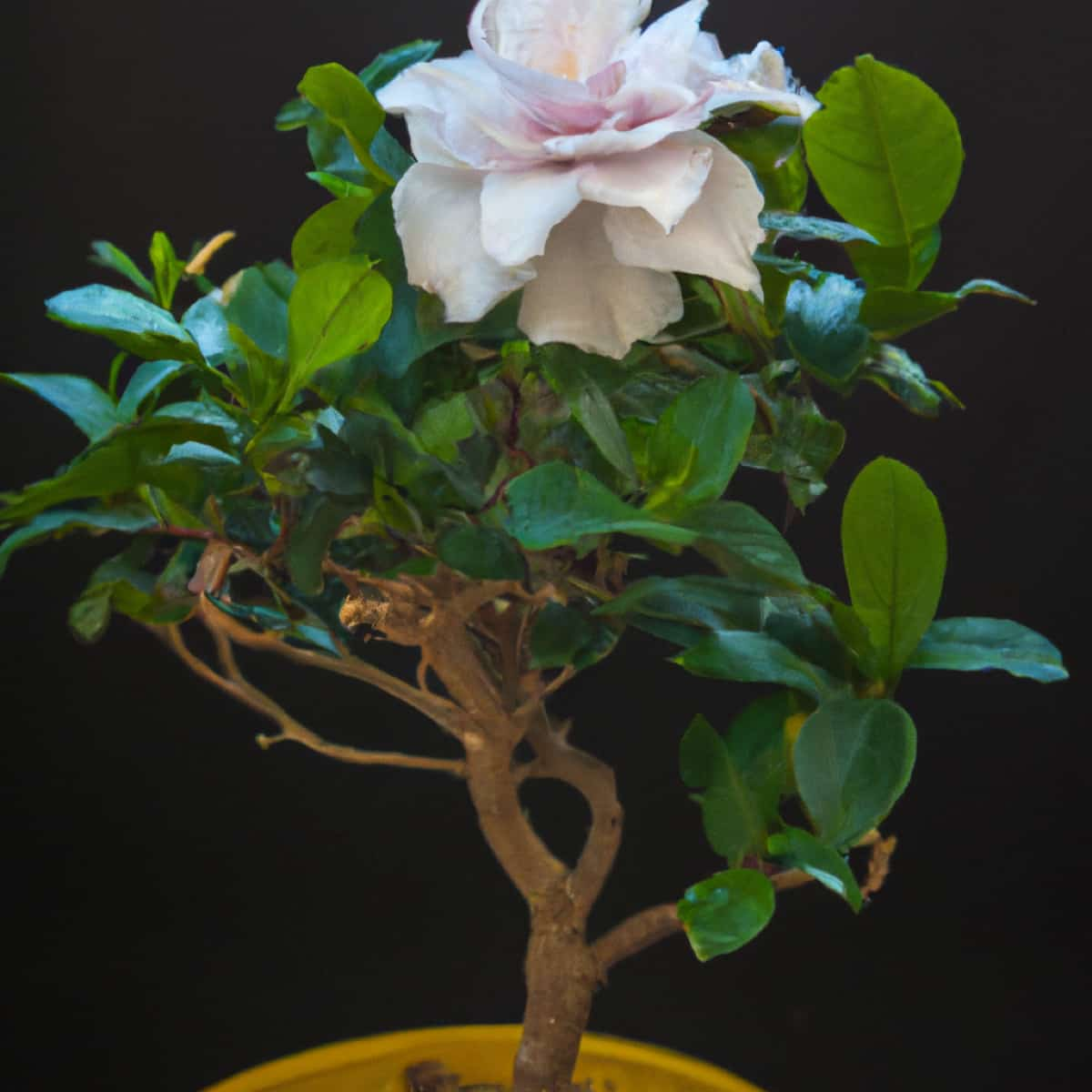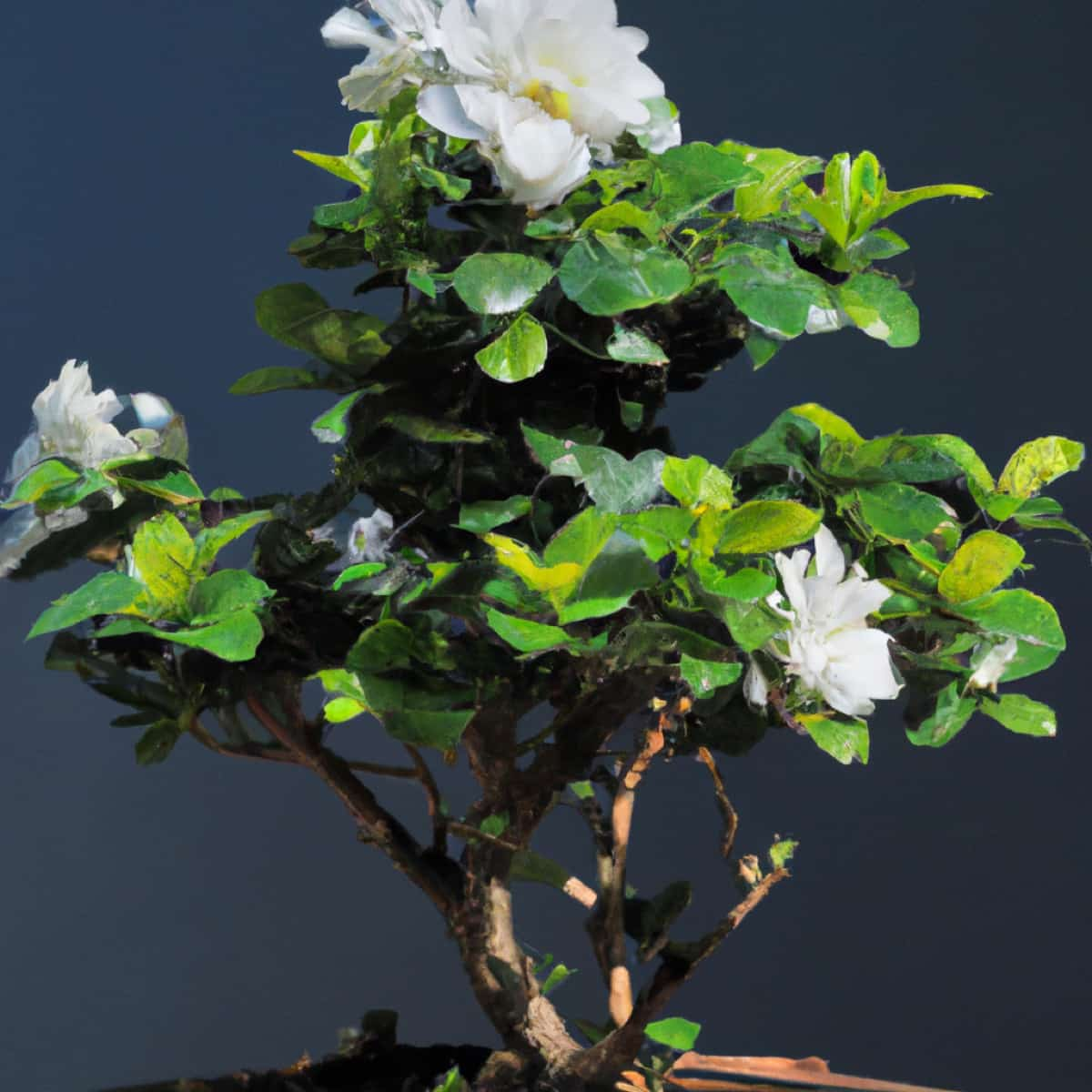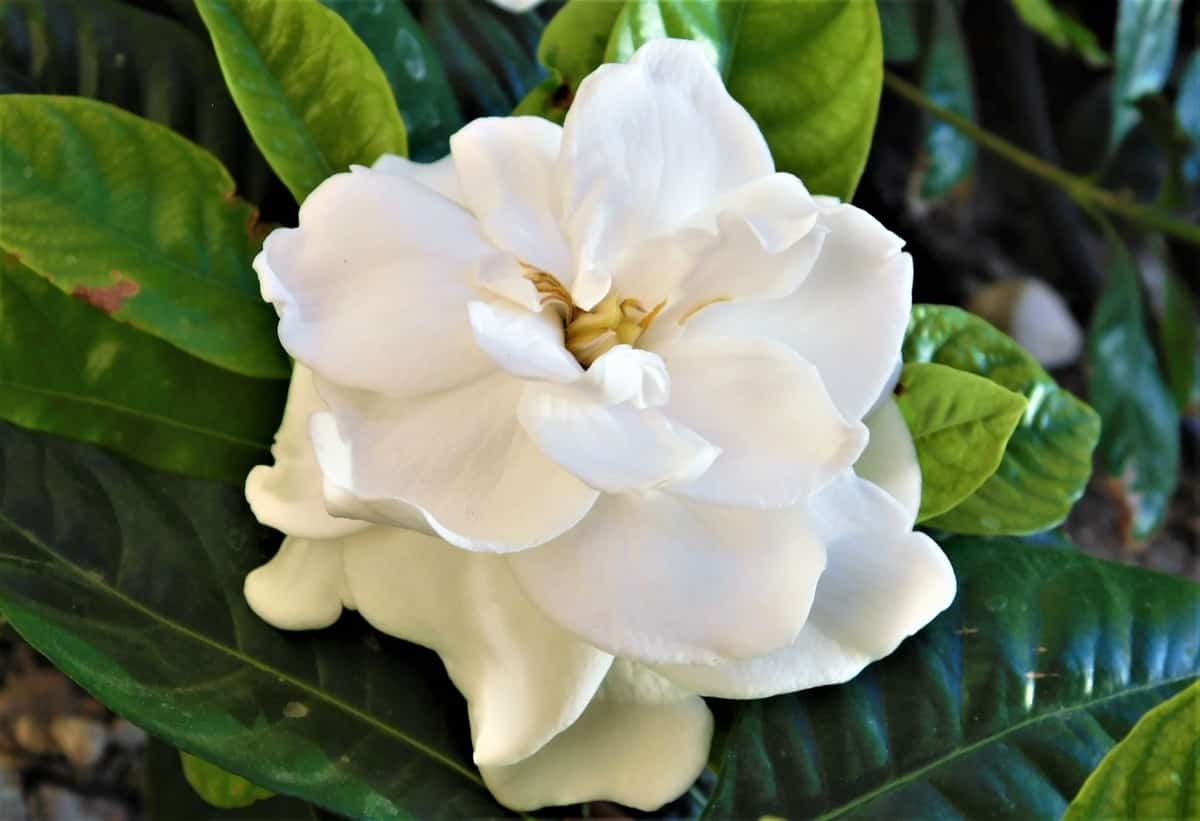The enchanting beauty of a Gardenia bonsai is not limited to its profuse, fragrant blooms but extends to its rich, glossy green leaves. Cultivating this gem of a plant is an artistic pursuit that demands patience, knowledge, and careful attention to detail. In this comprehensive guide, we will delve deep into the art and science of planting, growing, and caring for your Gardenia bonsai, covering various topics such as pruning, understanding whether it should be kept indoors or outdoors, interpreting yellow leaves, the best fertilizer, and more.

How to Grow and Care for Gardenia Bonsai
How to Plant Gardenia Bonsai From Seeds
Embarking on your Gardenia bonsai journey begins with planting the seeds. Gardenia seeds are tiny and delicate, requiring precision and care. Begin with a fresh pot filled with seed-starting mix. Sprinkle the seeds evenly across the soil and gently push them into the ground. Use clear plastic wrap to cover the pot and create a mini-greenhouse, which helps with seed germination. Once the seedlings appear, remove the plastic cover, and let nature do the rest.
Step-by-step Guide for Growing Gardenia Bonsai Indoors
A Gardenia bonsai is versatile, capable of thriving both indoors and outdoors. However, an indoor setting can provide a controlled environment. Begin by placing the bonsai near a south-facing window. Ensure it gets bright but indirect sunlight, as direct sunlight can cause leaf scorch. Next, consider the humidity around the bonsai.
Gardenia bonsai loves high humidity. A humidity tray with pebbles and water perfectly maintains the desired environment. Remember to water the bonsai regularly, but avoid overwatering. Lastly, watch for yellow leaves, which lack certain nutrients or overwatering.
Essential Care Tips for Gardenia Bonsai Trees
Providing optimal care is integral to keeping your Gardenia bonsai healthy and vibrant. The first sign of care deficiency often manifests in yellow leaves. You can prevent this issue if your Gardenia bonsai care routine includes the right balance of water, sunlight, and fertilizer. Adapt watering according to weather and regularly inspect soil for optimal moisture levels. A well-balanced bonsai-specific fertilizer will help provide the nutrients necessary for the tree’s growth.
Best Soil Mix for Gardenia Bonsai Cultivation
The soil quality determines the health and lifespan of your Gardenia bonsai. Use a well-draining soil mix with plenty of organic matter for optimal results. For ideal drainage, consider a blend of loamy soil, peat moss, and sand or perlite. A pH level between 5.0 to 6.5 is also important for ensuring the Gardenia bonsai’s strong growth.
Pruning Techniques for Maintaining a Healthy Gardenia Bonsai
Pruning shapes bonsai and fosters growth. Gardenia bonsai pruning should be carried out with sharp, clean tools to avoid damage or disease. Trim back any long, unruly branches and pinch off new growth to retain its shape. Remove any dead or diseased branches promptly to prevent the spread of disease.
Watering Requirements for Gardenia Bonsai in Different Seasons
Watering is a vital aspect of Gardenia bonsai care that changes with the seasons. During warmer months, the bonsai may require daily watering, while in colder months, watering may be reduced to once every few days. Always check the top layer of the soil for dryness before watering. Overwatering can cause root rot, a serious issue that can lead to yellow leaves and the eventual demise of the plant.
In case you missed it: How to Grow and Care for Magnolia Bonsai: Planting, Pruning, and Repotting

Preventing Pests and Diseases in Gardenia Bonsai Trees
Regular inspection is necessary to prevent pests and diseases in your Gardenia bonsai. Watch out for common pests like aphids, mealybugs, and scale insects. Similarly, diseases like root rot or leaf spot can be caused by overwatering or a lack of ventilation. Always ensure proper hygiene and take necessary precautions, like isolation, when introducing new plants to the existing garden.
Ideal Temperature and Humidity Conditions for Gardenia Bonsai
Gardenia bonsai thrives between 65°F to 75°F during the day and about 10° cooler at night. This temperature range makes it suitable for both indoor and outdoor environments. Regarding humidity, Gardenia bonsai prefers a higher level, around 50% or more. To keep this level stable, especially in dry winters, utilize a humidity tray or a room humidifier.
Fertilizing Schedule for Promoting Growth in Gardenia Bonsai
Providing proper nutrition is key to a lush, flowering Gardenia bonsai. A balanced bonsai fertilizer rich in nitrogen, phosphorus, and potassium is ideal. Additionally, a supplement with iron and magnesium will help prevent yellow leaves. The Gardenia bonsai fertilizer should be applied during the growing season, typically from spring to early fall, and reduced or stopped during winter.
Transplanting and Repotting Gardenia Bonsai: When and How
Transplanting and repotting is a vital part of bonsai cultivation, often required every 2-3 years for younger trees and 3-5 years for older ones. To repot, carefully remove the bonsai from its pot and gently shake the old soil from the roots. Prune back about a third of the root mass to encourage new growth. Place the bonsai in a clean pot with fresh soil, ensuring it is securely positioned. Post-transplant, place the bonsai in a shaded location for a few weeks to recover and adapt to its new environment.
Maintaining Ideal Sunlight Exposure for Gardenia Bonsai
Proper sunlight exposure is key to your Gardenia bonsai’s health and flowering capacity. These small trees require bright, indirect light, with protection from the harsh afternoon sun. Place your Gardenia bonsai near a south or west-facing window if grown indoors, ensuring it receives at least six hours of light daily. If the plant is outdoors, a spot with morning sun and afternoon shade is ideal. This balance of light will support lush foliage growth and stimulate blooming without causing leaf burn or undue stress to the plant.
Understanding and Implementing Proper Rest Periods for Gardenia Bonsai
Like all living beings, Gardenia bonsai also need rest periods to remain healthy and vibrant. These rest periods, often called dormancy, typically occur during the colder winter months. During this time, the plant’s growth slows significantly, requiring less watering and no fertilization.
This break gives the tree time to recuperate and gather energy for vigorous growth during the spring and summer months. Keeping your bonsai in a cooler location, with temperatures about 10° cooler than normal, can help trigger this dormancy. Remember, while the plant rests, it still requires proper light and humidity, so don’t neglect these important elements during the dormancy period.
In case you missed it: How to Grow Gardenias/white Peony in Greenhouse: A Step-By-Step Guide for Seed to Harvest

Conclusion
Following this detailed guide, you will be well-equipped to nurture and enjoy the rewarding journey of growing a Gardenia bonsai. Remember, patience is key. It may take a while before your bonsai blooms, but once it does, the sight and fragrance will be well worth the wait.
- Feed Your Flock for Less: Top 10 Tips to Save on Chicken Feed
- Ultimate Guide to Ossabaw Island Hog: Breeding, Raising, Diet, and Care
- Hatching Answers: The Top 10 Reasons Your Chickens Aren’t Laying Eggs
- Eggs and Economics: Breaking Down the Cost of Raising Backyard Chickens
- Defend Your Greens: Proven Methods to Keep Iguanas Out of Your Garden
- Ultimate Guide to Cinnamon Queen Chicken: A Comprehensive Guide for Beginners
- Ultimate Guide to California Tan Chicken: Breeding, Raising, Diet, Egg-Production and Care
- Ultimate Guide to Marsh Daisy Chicken: Breeding, Raising, Diet, and Care
- 10 Types of Chicken Farming Businesses You Can Start for Profits